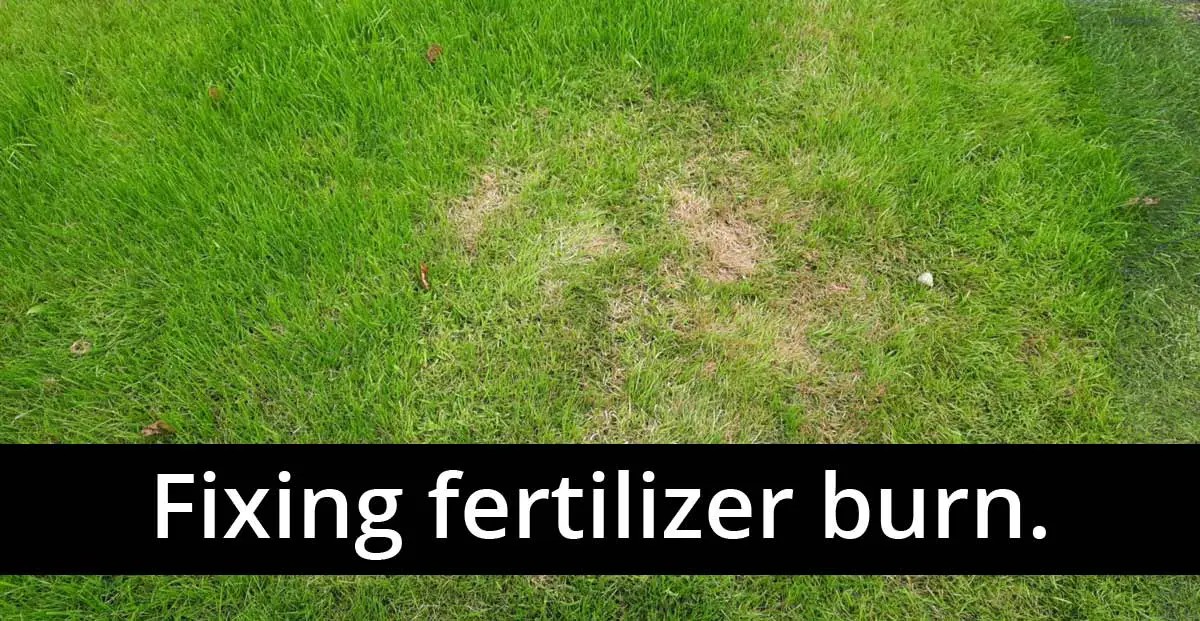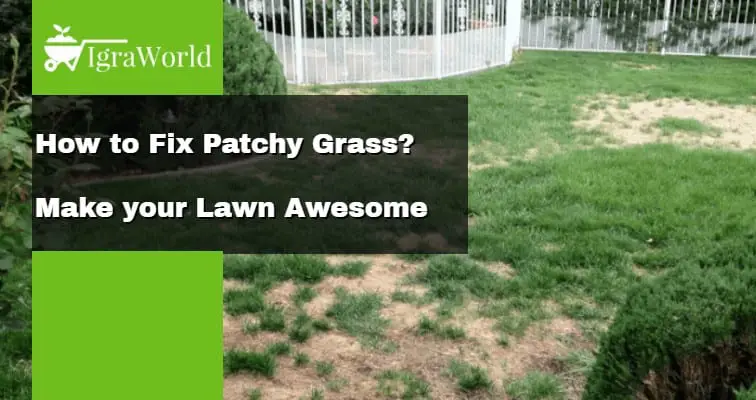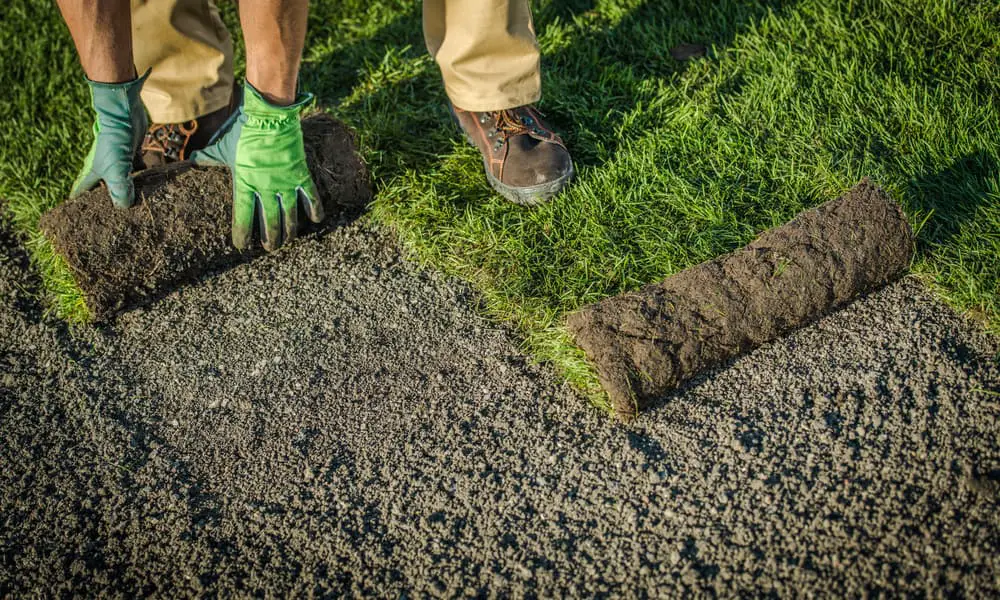Reseed To Freshen Up A Sparse Lawn
Shaping your lawn from seed is inexpensive and straightforward. Whether you are sowing seed to start from scratch or fill in patchy areas on an existing lawn, sowing is a much cheaper option for larger spaces just dont get expect instant results.
The right watering strategy is key: water your existing lawn well, sow your seeds and dont water again until you begin to see the shoots coming through. Watering too early risks washing the seeds away and increases the chance of mould setting in.
Install New Sod Plugs Sod Pods Or Seed
This step should only be for the homeowner who is looking to start over and restore a lawn from scratch. Sod installation can seem like a daunting investment. After all, grass is a living product. Determining what happened to your dead lawn in the first place with a soil test will keep this mistake from happening again. However, this is still a moment you can celebrate because you can begin to appreciate a fresh, new, green lawn that has the potential to outshine your neighbors yards.
First, decide if you want to install sod, plugs or seed. Sod pods are also becoming a popular method of installation. Sod pods cover a wider surface area than grass plugs so they tend to grow in a little quicker. Sod Solutions currently offers sod pod varieties for centipede grass, Floratam St. Augustine and Palmetto® St. Augustine. Once youve made this decision, you will want to choose the right type of sod for your area. If maintenance is an issue for you, do some research and find the best grass for low maintenance.
Next, you can follow our online installation guide for sod, grass plugs or seed. If you choose to install sod, be sure to check out our blog, Tips for Your Next Sod Job, as it consists of a few nifty tips that will make the sod installation process easier. For the next 30 days after installation for either of these three choices, follow our online establishment guide.
Select A Proper Herbicide
Next, its time to select the proper weed treatment based on both weed classification and the stage in their life cycle. Pre-emergent herbicides tackle weed issues before they spring up. Post-emergent herbicides target established weeds.
Keep in mind that herbicides can kill whatever plant life they come into contact witheven if the label says otherwiseso handle with care. If your aim is to re-establish your lawn, as we recommend, killing your existing, thinning grass isnt a big deal, since you will need to start fresh anyway.
Don’t Miss: How To Fix Urine Spots On Lawn
Test And Fertilize The Soil
To prepare the soil for new sod or grass seed, you need to determine the nutrient levels and adjust them to create the ideal environment for new grass. The best way to find out what your soil needs is to take a sample to your nearest Extension Office for testing. Many offices charge a small fee and return results in just a few days. Results from an Extension Office are often more useful than an at-home test because they usually include fertilizing recommendations. Once you know what your soil needs, go to your local garden store to find the right fertilizer and apply it to your lawn.
Spread Some Grass Seed

Use your hands or a broadcast spreader to spread grass seed throughout your lawn. Want more power? A slit-seeder cuts little slits in your yard and plants the grass seed automatically.
Before sowing the grass seed, dethatch your yard to expose the soil by a ½ inch, and soak your yard. Start sowing at the edge of your area. Divide the remaining seed and apply half while walking in one direction, and the rest while walking in another. Lightly cover the seeded area with compost and topsoil.
When you overseed is dependent on where you live.
Northern Climates:
Overseed in late summer or early fall to help young grass germinate, establish strong roots, and store food needed for spring.
Southern Climates:
Overseed in the early summer to help it grass grow strong roots and store nutrients right before fall.
Don’t Miss: Is Lawn Aeration Worth It
Slice Seeding In The Chicagoland Area
The most effective way to seed your lawn and increase turf density is through slice seeding. We use a machine called a slice seeder to cut vertically through your turf and into the soil, which drops seeds at the same time. This seed-to-soil contact helps the seed germinate, resulting in a faster and much higher germination rate than overseeding.
Recover Restore And Maintain Your Lawn After Drought
Last summer we had less than half the average rainfall between Memorial and Labor days. Now that our yards have greened up, are you noticing patches of dead grass in your lawn, left behind by last years drought?
Early June is a great time to focus on getting the lawn thicker and healthier. Lets make some repairs, upgrade our lawn management practices and be ready for whatever this summer brings.
Don’t Miss: Who Buys Riding Lawn Mowers
Is Your Lawn Ugly How To Restore Your Lawn
Every year the lawn season is marked by extreme variability in moisture and temperature conditions, and in many instances, these abrupt changes were seriously damaging to grass.
This was to be expected since a lawn made up of thousands of growing grass plants cannot move into the shade or into a cool room when the temperature shoots skyward.
It just has to stay where it is and take it.
Then, too, the frequent spring rains encouraged lush top growth, but they also drowned out the deep roots, and the shallow roots could not support such hungry top growth when hot, dry weather followed.
Again, the cool weather experienced in many parts of the country during June and July was ideal for heavy growth, but such growth could not stand alone when the climate switched to intense heat and high humidity later on.
Maintenance For Damaged Lawns
Fertilize your lawn several times a year. At least, apply fertilizer in late fall and early-mid spring. This way, the grass gets nutrients to survive the winter while also getting fertilizer right before peak growing season. Scheduled fertilizer will help keep your lawn beautiful year round!
Aerate your lawn several times a year. Aerating is simple and can be done with a plug or spike aerator. This helps loosen up the soil and prevent it from compacting into a tight mess.
Water your lawn adequately, according to the lawns needs. Give it about an inch to an inch and a half every week. Keep an eye on weather forecasts: if heavy rain is expected, you dont need to water your lawn.
Lawn damage can be frustrating and costly. If youre dealing with a damaged lawn, dont despair! Contact us for more information about our lawn services in Cumming wed be happy to help!
Don’t Miss: When Do You Air Raid Your Lawn
Restoring Chicagoland Lawns With An Organic Program
Bring your lawn back to life safely and organically! The spring and fall are ideal times to rejuvenate your lawn after a tough winter and summer.
For restoring lawns, the best natural defense against weeds is dense, thick turf. Even in the healthiest lawns, grass dies each winter. This is especially true in colder climates like Illinois. Overseeding is a great tool for creating and maintaining a lush lawn.
We recommend adding new grass seed to an established lawn every year, in the spring or fall, with our sustainable blend of grass seed. This custom blend, made of primarily tall fescue, creates a dense root system that retains water and protects your grass against drought, disease, weed germination, and tough Midwest summer heat.
Give us a call at 847-866-1930 or contact Greenwise online to schedule your organic lawn care appointment today! Now is a great time to restore your beautiful lawn!
Feed Your Lawn Regularly
Nothing brings existing foliage in the garden back to life like a good quality feed. Some feeds are designed specifically for the lawn, which are great if your lawn is moss and weed-free, and others have added ingredients to kill unwanted fungi, weeds and moss for quick results. Some are designed for the spring to promote new growth, and others are for toughening up your autumn grass in time for winter.
Not all feeds are pet-friendly, so check the packaging beforehand or ask the supplier. Chemical-free weed killing alternatives include boiling water which may also affect your grass so its not ideal vinegar, salt and sugar.
Whatever feed you choose, spread from April through to September for extended growth and health. Try a liquid feed from later spring into summer to feed as well as moisten your lawn during dry spells, then opt for a gentler feed which is low in nitrogen in autumn which wont speed up growth and leave new shoots susceptible to winter frosts.
Also Check: How Do You Spell Lawn Mower
Plant New Sod Or Seed
Planting sod: Large areas of brown lawn can be filled in with full sod pieces. Use plugs or sprigs when filling in smaller sections. The key to laying down sod is to make sure each piece is fitted firmly up against its neighbor. Their root sections need to connect firmly to the soil underneath.
Planting seed: If youre going to plant from grass seed instead of sod, then evenly spread the seed across the affected area. Pay attention to getting proper contact between the seed and soil. Cover the seed with a thin layer of soil.
Get Rid Of Unsightly Weeds

This step can be applied to either scenario of repairing a damaged lawn or removing a dead lawnyou will just use different methods of weed removal. If you are wanting to completely start over and remove a dead lawn, youll need to nuke everything. This is usually done with a non-selective herbicide like glyphosate. This will kill any vegetation it comes in contact with including your lawn, so you wont want to do this if you are trying to repair a damaged lawn. The idea behind applying glyphosate is to effectively kill all the problematic weeds that have taken over your lawnespecially if you have a severe weed problem. Wait about seven more days and then begin removing whatever is left of your old grass with sod cutters.
If you dont want to start over with a new lawn and wish to simply repair it, you will want to apply a selective post-emergent herbicide. A selective herbicide kills only the plants it is labeled to kill whereas a non-selective herbicide will kill any plant it touches. A post-emergent herbicide is designed to kill any currently existing weeds. Its helpful if you are able to identify the type of weed your lawn has so that you can select a post-emergent herbicide that will kill it. A few post-emergent herbicide options are located below. Read all product labels thoroughly before applying.
Also Check: What Does Trugreen Spray On Lawns
How To Bring Your Lawn Back To Life In 5 Simple Steps
Does your lawn look dead and dying or filled with brown grass instead of green? Don’t give up hope quite yet. Chances are there’s still life in that “dead” lawnit’s just calling out for help. You can answer its cry and restore your lawn to lush, living beauty with all-in-one Pennington Lawn Booster and these five easy steps:
There Are Ugly Brown Spots On My Lawn
Okay, to be honest, this ones a little more complicated, because there are several things that could be causing the spots. Possible culprits range from grubs or fungus to foot traffic, weed dieback, and dog urine. So, before you grab a product and start spreading or spraying, its important to identify what the problem is.
- If critters like raccoons and skunks have begun digging in your yard, or the dead patches of grass lift up like loose carpet, chances are you have grubs. Check out section 4 below to find out what to do.
- Spots caused by dog urine tend to have brown centers with green outer rings. Get rid of them with Scotts® EZ Seed® Dog Spot Repair Sun and Shade .
- Fungus tends to cause irregular patches of yellow or straw-colored grass that can range in size and shape. To fight back, apply Scotts® DiseaseEx Lawn Fungicide, will control a variety of fungal diseases for up to 4 weeks. Be sure to follow label directions.
- For brown spots caused by foot traffic or areas of dead weeds, a product like Scotts® EZ Seed® Patch & Repair will do the trick.
Also Check: What To Spray On Lawn For Chiggers
The More Your Mow The Thicker Your Grass Will Grow
As soon as the cold winter snap seems to be over, and your grass seedlings are dry and established, start mowing at least once a fortnight in spring and once a week in summer to prompt full and thick regrowth. Remember to collect your clipping to store in a your compost bin. If you dont have one, a thick black bin bag will do!
How Do I Make My Grass Green Without Weeds
Grass SeedTest Your Soil. Roots depend on healthy, nutritious soil to grow green and lush grass. Fertilize Your Lawn. A big part of knowing how to make your lawn greener is choosing the right fertilizer. Kill Weeds and Unwanted Insects. Use Grass Seed. Water Your Lawn. Aerate Your Lawn. Replace Lawn Mower Blades.
Recommended Reading: Where Can I Get Parts For My Craftsman Lawn Mower
S For Restoring A Lawn
Get The Professionals In
No one can deny the importance of a well-manicured lawn. It can provide a place for children to play, pets to run around, and a place for homeowners to relax. However, keeping a lawn looking its best can be a lot of work. For many people, its simply not worth the time and effort. Thats where professional lawn care services come in.
Professional lawn care services can cover everything from mowing the lawn to fertilizing it. They have the experience and expertise necessary to keep your lawn looking great all year round. Best of all, you dont have to do anything sit back and relax while they take care of everything.
If youre interested in hiring a professional lawn care service, be sure to do your research first.
Recommended Reading: What Kind Of Lawn Fertilizer Do I Need
Replace Any Hard Or Compacted Soil
Hard soil happens when the soil compacts in on itself and becomes tightly packed.
Aeration is the way to prevent this from happening to your soil. However, if the soil is already hard, aeration will likely not help much. To test this, water your lawn thoroughly and then try and stick a 6 screwdriver. If you cant do this, then the soil is too hard and likely needs to be replaced.
You shouldnt need to replace your entire lawns soil, though: only some spots should be hard due to foot traffic.
To replace hard soil, dig up the soil with a shovel and break it up. Then, take the broken up dry soil and move it to a different area of your lawn or garden . Replace the soil with a softer, less compact soil.
S After Seeding The Lawn

Rake After seeding the lawn, raking the soil is very important. Raking helps the seeds to get covered with a thin layer of soil which helps the seed to be cool and moist, helping in the germination and providing essential nutrients from the soil. It also provides the security of the seeds from birds and animals which eat seeds.
Water After raking water the soil very lightly to keep the soil moist. Dont water heavily as it can make the seeds float and drain out from the lawn. Light water the lawn 3-4 times a day to keep the soil moist throughout the day for a week.
After the first week, water your lawn once a day and increase the duration and after the second week slowly decrease the frequency and increase the duration of the watering until you water your lawn once a week with 1 inch of water.
This will ensure healthy growth of the roots in the soil which will make it heat and drought resistant and make your lawn thick and healthy.
Maintain Now you have completed the process of reseeding the lawn but the job is not done yet. You need to properly maintain the lawn to keep it healthy and thick and to see if the problem is occurring again or not. Maintain the lawn with proper mowing, regular watering, and proper fertilization of the lawn. Mowing, watering, and fertilization are the key to a healthy and perfect lawn.
Don’t Miss: Who Sells Yardman Riding Lawn Mowers
